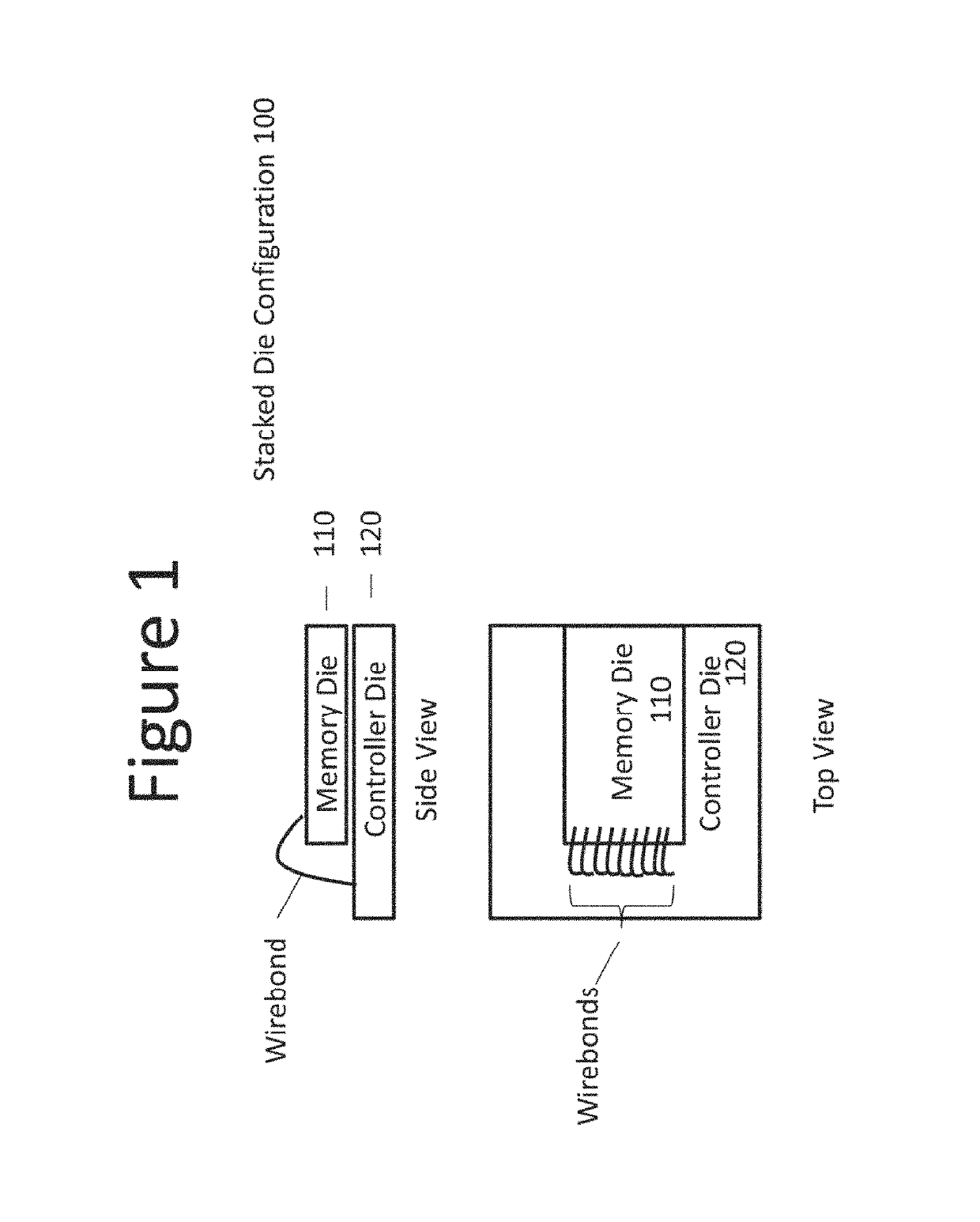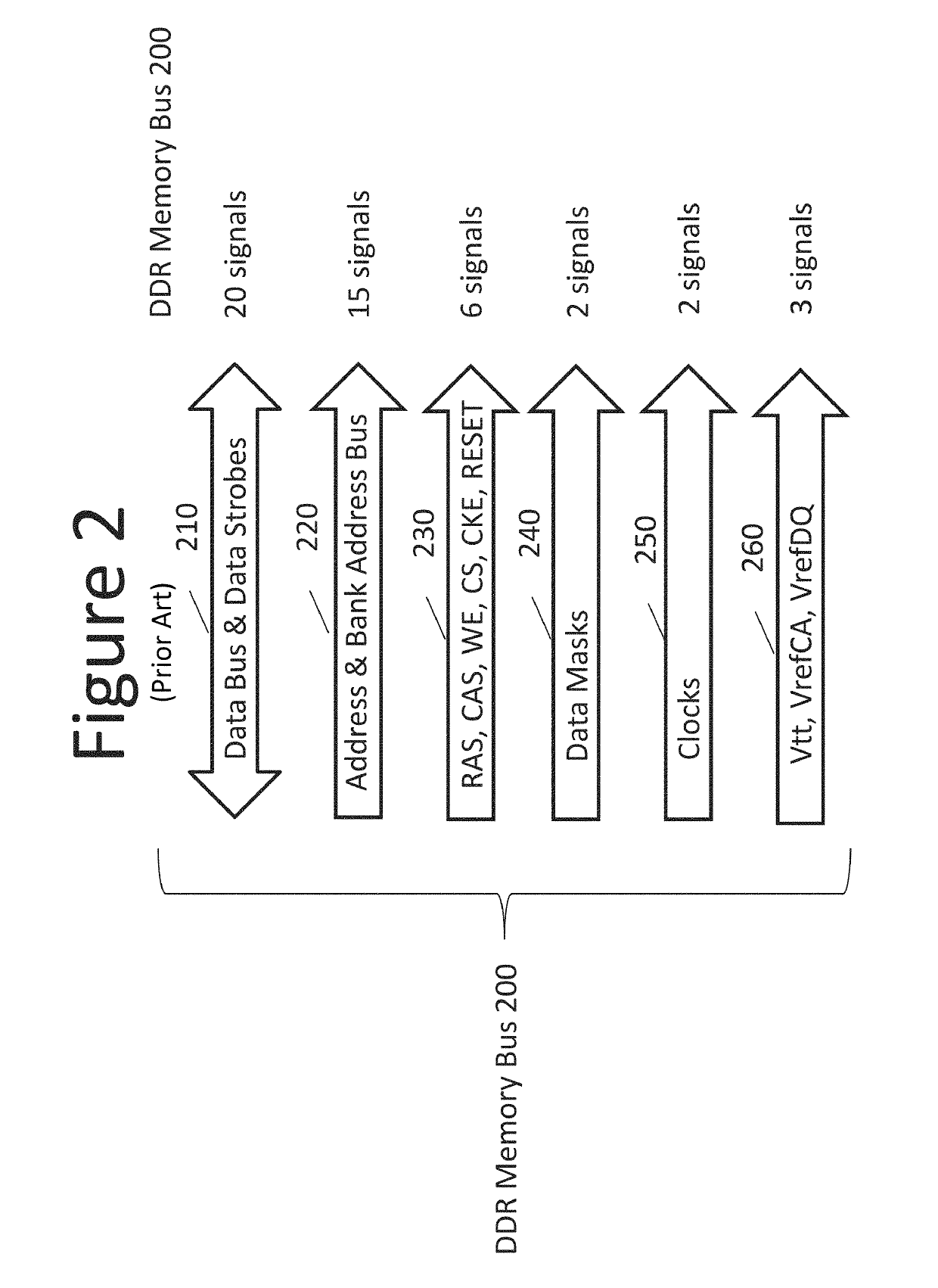Low-pincount high-bandwidth memory and memory bus
a high-bandwidth memory and low-pincount technology, applied in the field of low-pincount high-bandwidth memory and memory bus, can solve the problems of limiting the performance of the memory bus, adding cost with little marginal benefit, and not being able to access multi-bank drams in burst read mod
- Summary
- Abstract
- Description
- Claims
- Application Information
AI Technical Summary
Benefits of technology
Problems solved by technology
Method used
Image
Examples
case 2
[0220 with the DRAM driving the link is also shown in FIG. 43 In both cases, conventional series terminated switching / signaling is used. Because the receivers in each case have no parallel terminations there's no DC power consumed by the terminations.
[0221]Timing waveforms of these two Cases 1 and Case 2 are shown in FIG. 44. The one way path delay 42211 is shown to apply to the transient conditions of Low to High and High to Low transitions. Both ends of the link 42200 and 42300 are shown as well as the node connecting the driver to the link through the series termination impedance on each end of the lines 42201 and 42301. During the transient period the driver-end of the link 42200 or 42300 sees a dwell period equal to twice the one-way path delay 42211 at half of the incident voltage step observed at the active driver output 42201 or 42301. The receiver in either Case 1 or Case 2 receives a full signal transition on the incident wave in either Case 1 or Case 2 in the point to poi...
PUM
 Login to View More
Login to View More Abstract
Description
Claims
Application Information
 Login to View More
Login to View More - R&D
- Intellectual Property
- Life Sciences
- Materials
- Tech Scout
- Unparalleled Data Quality
- Higher Quality Content
- 60% Fewer Hallucinations
Browse by: Latest US Patents, China's latest patents, Technical Efficacy Thesaurus, Application Domain, Technology Topic, Popular Technical Reports.
© 2025 PatSnap. All rights reserved.Legal|Privacy policy|Modern Slavery Act Transparency Statement|Sitemap|About US| Contact US: help@patsnap.com



